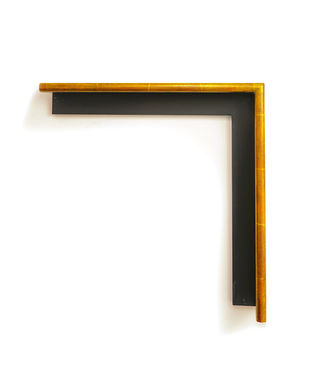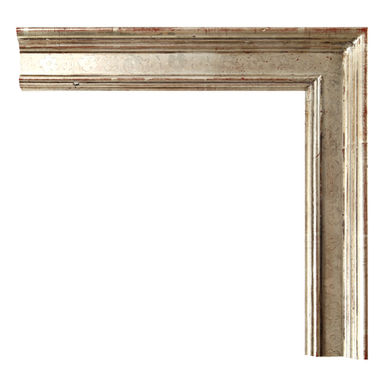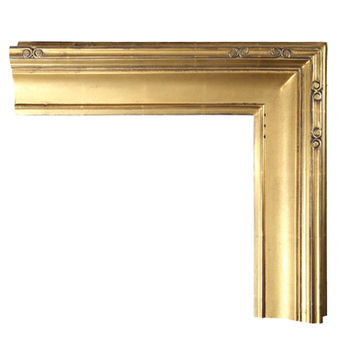
Our Frames
20th Century Frames
The turn of the century turn people away from excessive decor, and towards Modernism, they honored agrarian past while being open to an industrial future.
Modern frame designs saw the birth of the floater frame, the Mondrian box designed by Le Corbusier, the plexiglass box, the welded metal frame, the sectional metal all helped and developed somehow by Robert Kulicke for the MoMA.
European Frames
This is the Origen of the frame as we know it today, we have no examples of Greek frames other than jewelry in its form, and the earliest exiting frame is from Egypt as one piece with the painting it in-housed, the frame, a pure form of ornament, starts in Italy, then it takes importance in Spain, Holland the Low Countries until France takes over, the frames produced take the personality of the people and the villages that produced them. Their believes, superstition; passions and fears are all burnt-in the forms of the stick they shape.
Italian
Just as the personality of the Italians, pioneers in the frame industry show their immense passion, boldness, loudness and sentimentalism in a ways that uniquely represents their villages.
Low Countries
Throughout Central and Northern Europe, variations of the simple Cassetta Italian frames were used in the 15th and 16th century. They explored natural woods frames with black moldings, particularly in 16th century Holland as it reflected how reserved and sober its people were.
French
Frames developed in an unprecedented way from mid-XVII century to the Revolution. The terms Louis XIII, Louis XIV, Regence, Louis XV, Louis XVI and Empire were styles in frames whose popularity extended for 150 years. The frames showed not only the personality of their people, but also the character of the Crown in power.
American Frames
The first ones were interpretations of the European frames they have glance at, then the youth of the continent, made them innovate in designs and finishes, the birth of the American Impressionism, for example, introduced a purple clay and an 18kt Gold called Lemon Gold, thing that would be completely rejected by European conservatism.
19th Century Style
In the early 19th century, American frames were mainly imported from England and France, mainly for portraits of the aristocracy. Local craftsmen also copied frames from pattern books during this period. In the 1820s, Americans turned from their adopted style of Ancient Rome to Ancient Greece for inspiration.
Federal Period
This period brought about neo-classical styles with low relief ornamentation, echoing the decorative and architectural motifs associated with classicism. A notable style was Gilbert Stuart, 1790-1820, which exhibits a plain profile without ornaments and a simple cove silhouette.
Barbizon Style
Barbizon frames are named after a group of landscape artists working in the woods of the Barbizon. Their works were influenced by 17th century Dutch masters.
Corot and Millet are often associated with the Barbizon group. American impressionist painters made use of this, and although certain features differed from the French Barbizon, the essence is the same.
James McNeil Whistler
Whistler’s designs reflected the aesthetics of the pre-rafhaelites and were influenced by Oriental ceramics, Dutch frames, and patterns by Own Jones which he studied.
Stanford White
White was best known as one of the partners of the firm McKim, Mead, and White. He brought a fresh and dynamic and aesthetics to the frame design. In an interview, Charles C. Baldwin said, “When Mr. White gets tired of designing houses, he relaxes his brain by designing for picture frames”
He mastered the craft of design by interlacing the styles of different periods and of different countries.
Foster Brothers
Among the great turn-of-the-century frame-makers is Foster Brothers of Boston, founded in 1875, by John Roy and Stephen Bartlett Foster. Many of their frames were designed by C.F. Richter, and Whistler’s influence is evident in their work.
Herman Dudley Murphy
Murphy’s work is closely related to that of Whistler. He also shared the common belief that the picture frame plays an important role in elevating how the surroundings are perceived in a work of art of the picture frame. In 1903, Murphy partnered with Charles Prendergast and setup a frame shop in Winchester, Massachusetts named Carrig-Rohance.
Walfred Thulin
Born in Sweden, Thulin came to America at the age of 22 as a talented wood carver who soon affiliated himself with Herman Dudley Murphy. In 1912 he opened his own shop on Boylston Street in Boston; here he worked until the end of his life in 1949.
Charles Prendergast
Charles Prendergast first found work at the Art Store of Doll & Richards in the 1870’s. With the help from his brother Maurice, Charles began his first steps as a frame-maker. He found inspiration in a collection of Chinese and Persian art.
Newcomb Mackling Company
Many talented artisans’ hands shine thanks to the beauty of the frames of the prolific Newcomb Mackling Company, originally founded by S.H. McElswain in Evanston, Illinois in 1871. In 1883, McElwain’s bookkeepers Charles Macklin and John Newcomb became partners and took over the company.
Frederick Harer
Harer traveled extensively throughout Spain and the West Indies. These experiences profoundly impacted Harer and it reflected in his work. In Harer’s own word: “All my designs are based on fundamental truths that I hope will survive this period and all others, as the primitives have done”.
Bernard Badura
Badura studied at the Pennsylvania Academy of Fine Arts and was a pupil and close friend of Frederick Harer. His work shows Harer’s influence which he interpreted and executed with a sense of synthesis and a modernistic twist.



































































































































